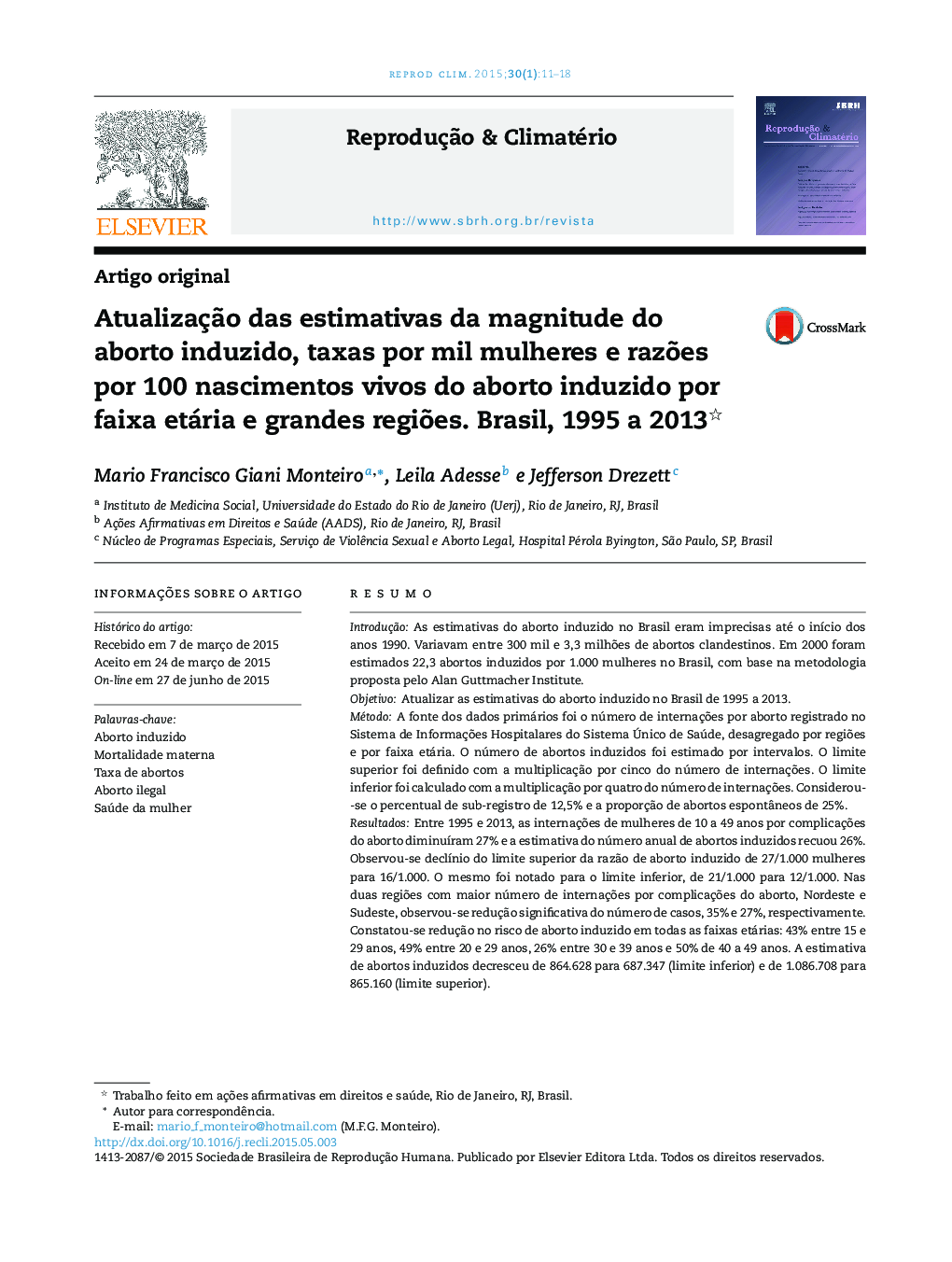| Article ID | Journal | Published Year | Pages | File Type |
|---|---|---|---|---|
| 3969854 | Reprodução & Climatério | 2015 | 8 Pages |
ResumoIntroduçãoAs estimativas do aborto induzido no Brasil eram imprecisas até o início dos anos 1990. Variavam entre 300 mil e 3,3 milhões de abortos clandestinos. Em 2000 foram estimados 22,3 abortos induzidos por 1.000 mulheres no Brasil, com base na metodologia proposta pelo Alan Guttmacher Institute.ObjetivoAtualizar as estimativas do aborto induzido no Brasil de 1995 a 2013.MétodoA fonte dos dados primários foi o número de internações por aborto registrado no Sistema de Informações Hospitalares do Sistema Único de Saúde, desagregado por regiões e por faixa etária. O número de abortos induzidos foi estimado por intervalos. O limite superior foi definido com a multiplicação por cinco do número de internações. O limite inferior foi calculado com a multiplicação por quatro do número de internações. Considerou‐se o percentual de sub‐registro de 12,5% e a proporção de abortos espontâneos de 25%.ResultadosEntre 1995 e 2013, as internações de mulheres de 10 a 49 anos por complicações do aborto diminuíram 27% e a estimativa do número anual de abortos induzidos recuou 26%. Observou‐se declínio do limite superior da razão de aborto induzido de 27/1.000 mulheres para 16/1.000. O mesmo foi notado para o limite inferior, de 21/1.000 para 12/1.000. Nas duas regiões com maior número de internações por complicações do aborto, Nordeste e Sudeste, observou‐se redução significativa do número de casos, 35% e 27%, respectivamente. Constatou‐se redução no risco de aborto induzido em todas as faixas etárias: 43% entre 15 e 29 anos, 49% entre 20 e 29 anos, 26% entre 30 e 39 anos e 50% de 40 a 49 anos. A estimativa de abortos induzidos decresceu de 864.628 para 687.347 (limite inferior) e de 1.086.708 para 865.160 (limite superior).ConclusãoTanto a razão de aborto por 100 nascimentos vivos como a taxa de abortos induzidos por mil mulheres de 15 a 49 anos no Brasil mostraram decréscimo no período estudado.
IntroductionEstimates of induced abortion in Brazil were inaccurate until the early 1990, varying between 300 million and 3.3 million clandestine abortions. In 2000, were estimated 22.3 abortions induced by 1000 women in Brazil, using the methodology proposed by the Alan Guttmacher Institute.ObjectiveUpdate estimates of induced abortion in Brazil during the period of 1995 to 2013.MethodThe primary data source was the number of hospitalizations for abortion registered in the Hospital Information System of the Unified Health System, disaggregated by region and age group. The number of induced abortions has been estimated by interval upper limit, multiplying by five the number of hospitalizations, and by lower bound, by multiplying by four the number of hospitalizations. It was considered under percentage record of 12.5% and the proportion of miscarriages of 25%.ResultsBetween 1995 and 2013, the hospitalizations of women from 10 to 49 years by complications from abortion decreased by 27% and the estimate of the annual number of induced abortions declined 26%. It was observed decline of upper limit of induced abortion ratio of 27/1000 women for 16/1000. The same was noticed for the lower bound of 21/12/1000 to 1000. In the two regions with the highest number of hospitalizations for complications of abortion, Northeast and Southeast, showed significant reduction in the number of cases of 35% and 27% respectively. Found a great reduction in the risk of induced abortion, of 43% between 15 and 29 years, 49% between 20 and 29 years old, 26% between 30 and 39 years and 50% of 40 to 49 years. The estimation of induced abortions decreased from 864,628 to 687,347 (lower limit), and from 1,086,708 to 865,160 (upper limit).ConclusionBoth the reason of abortion per 100 live births and the rate of induced abortions per thousand women aged 15 to 49 years in Brazil showed decrease in the studied period.
